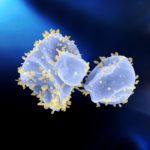About
Archaea have unique membranes, radically different from those of bacteria and eukaryotes. Whereas in bacteria and eukaryotes, lipids consist of fatty acids linked to glycerol moieties via an ester bond, in archaeal lipids, isoprenoid alkyl chains are bound to glycerol moieties via ether linkages. Furthermore, most hyperthermophilic archaea, such as members of the order Sulfolobales, contain monolayer membranes largely composed of long, tetraether lipids spanning the entire thickness of the membrane. How such monolayer membranes are remodeled during various cellular processes remains poorly understood. Despite the differences in membranes, some archaea encode cell division machinery homologous to that operating in eukaryotic cells and known as the ESCRT (endosomal sorting complexes required for transport) complex. In eukaryotes, the ESCRT machinery is involved in many processes of membrane remodeling, including membrane abscission during cytokinesis, membrane vesicle biogenesis, budding of diverse enveloped viruses, etc. The MEMREMA project, funded by Ville de Paris in the framework of the Emergence(s) program, will investigate the functioning of the archaeal ESCRT machinery, in particular, during the assembly and release of different membrane-containing archaeal viruses available in our collection. The improved understanding of membrane remodeling in hyperthermophiles should allow broader utilization of the archaeal lipids and membranes for various biomedical and nanotechnological applications.




